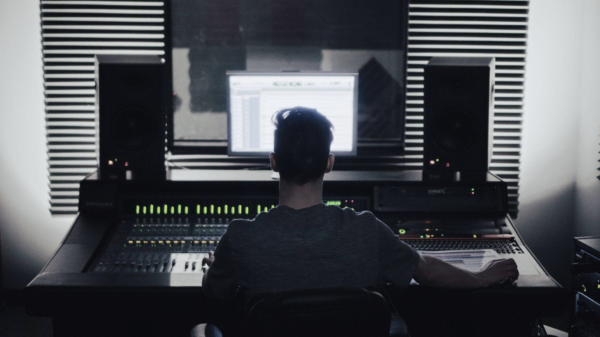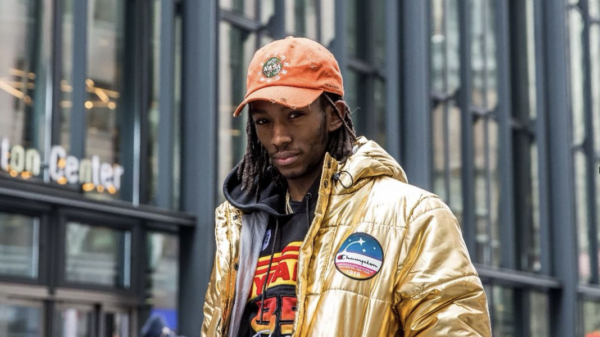In the history of Saturday Night Live, was anything as secretive and anticipated as the moment this season right before Timothée Chalamet appeared onstage to sing the first of three Bob Dylan numbers? Which songs would they be? How would he sound? For me, it was all strangely familiar — a throwback to the moment when a lucky bunch of us in the SNL audience witnessed a complete-unknown music moment of its time, and from an equally unexpected source.
I can’t remember how we knew about it, but in the fall of 1978, my college roommates and I heard that the most subversive and insubordinate show on network television gave away standby tickets the morning of each broadcast. Two of my roomies, who were better at staying up all night than I was, slept on the street outside 30 Rockefeller Plaza so they could be among the first in line. Later in the morning, they returned to our dorm with light-headed grins and three tickets to the live broadcast of SNL: We were in. The guest host would be Carrie Fisher, merely a year after she’d beguiled us all in Star Wars.
After arriving at 30 Rock that evening, we soon found ourselves in an elevator that opened up to the hallowed Studio 8H before being hustled to our seats on the upper section, off to the right. As we were climbing those steps, I passed some type of sign with the name of the host and also the musical guests: “The Blues Brothers.” My roommates had no idea who that was, but having just read about them in a recent issue of Rolling Stone, I had an inkling. “I think that’s a band Belushi and Aykroyd put together,” I said. My roommates gave me a puzzled look and a shrug, and up we went. It sounded like some zany sketch, and we didn’t give it much more thought that than. (The Blues Brothers had already appeared on an earlier SNL a few months before, but we’d apparently all missed that episode.)
At the start of its fourth season, SNL was no longer the insubordinate new kid on the block. That summer, the proudly boorish Animal House had made Belushi the equivalent of a mainstream movie star, and even a few of its wonderfully deranged bits, like the hapless and eternally tortured clay puppet Mr. Bill, felt like they were getting a bit stale. Chevy Chase was long gone and we were still adjusting to his replacement, Bill Murray. As we acclimated ourselves to our surroundings, I glanced around and took in the bustling inner workings of a TV set: the scurrying crew, the cameras, the lighting rigs, the men holding cue cards, the stage where the hosts emerged to do their monologue. It all felt much smaller and more mundane than I’d expected.
Editor’s picks
And yet the sense of excitement, of anticipation, was like little I’d experienced at a live event. I’d already attended a bunch of rock shows in arenas and sheds, but the voltage inside Studio 8H was decidedly more electric. And it made sense, since that SNL cast — the impulsive Belushi, the weirdly enigmatic Aykroyd, the intentionally smarmy Murray, the deadpan Jane Curtin, the adorably wacky Gilda Radner, the slinky Laraine Newman, the versatile but under-used Garrett Morris, along with their overseer, Lorne Michaels — were rock stars. Next to them and their swagger, the actual rock stars of the previous decade now seemed complacent and self-satisfied, and you could sense that in the crowd. What sick, dark humor would be unleashed in this episode? How overt would the drug jokes be? Who would the FM-radio-friendly musical guest be? (The previous shows that season had slipped in Devo, the Rolling Stones, Frank Zappa, and Grateful Dead, none of them network-TV regulars.) Looking back, Saturday Night Live now feels like the first TikTok. The format of each broadcast was pretty much set, but you never knew which sketch or character was coming at you next, whether it would be brilliant or dumb, or whether you’d even remember it or not.
Then the clock above the stage arrived at 11:30 and we were truly live from New York. Instead of a cold-open sketch or Carrie Fisher bounding down the stairs for her monologue, we saw a bunch of musicians in sunglasses, some bearded, some in suits and vests, launching into a brassy instrumental version of Otis Redding’s funky “I Can’t Turn You Loose.” (I recognized SNL‘s own Paul Shaffer at the piano, but it took me a few minutes to realize that the guitarist was Steve Cropper and the bass player Donald “Duck” Dunn, both foundations of the Stax Records era.) And there was Morris, the original cast’s sole Black member, dressed in some sort of sharkskin suit and spouting an introduction about us being in a lounge and welcoming these couple of guys from Joliet, Illinois.
Related Content
Before we could get our heads around any of it, out strolled Belushi and Aykroyd, in matching dark suits, black hats, sunglasses, and black shoes. As Belushi snapped his finger along to the music, he unlocked a briefcase handcuffed to the arm of Aykroyd, who opened it to reveal a harmonica, all while “I Can’t Turn You Loose” kept pounding around them. Then that song stopped, on a dime, with Belushi doing a cartwheel as a finale. With only a few seconds’ pause, Cropper and the other guitarist, Matt “Guitar” Murphy, slipped directly into a recognizable guitar lick. It was “Soul Man,” the old Sam and Dave song. The horn section kicked in and Belushi and Aykroyd, who’d been standing grim-faced next to each other, began their version of dancing, arms and legs akimbo.
As breathtaking as it was to see the two of them right in front of us, I still thought: What was this, a gag or parody? The backstory — Belushi meeting blues singer Curtis Salgado while filming Animal House in Oregon and Aykroyd introducing his friend to Chicago blues — was still a mystery.
Then, almost missing the cue, Belushi stepped forward and grabbed the mic stand. Wait, what?
We were right to be skeptical about singing actors. Ralph Malph from Happy Days had just put out an album, for God’s sake. But as the song blasted, it was impossible not to be swept up. Aykroyd’s dancing — a short-circuiting robot doing knee-to-chest steps — was goofy but mesmerizing, and Belushi’s grainy voice, while neither Sam nor Dave (nor Joe Cocker, whom he impersonated), had a husky enthusiasm of its own. But more important was the music. On the radio at the time, you were more likely to hear yacht rock, disco, or SoCal troubadours than classic Black music records like the gems from the Stax catalog. Yet here was one of those oldies, mightily recreated by two of the musicians who played on it, and two frontmen hurling themselves into it with stone-faced (or was it stoned-faced?) hipster solemnity. Aykroyd would later describe the performance as their way of warming up the crowd for Fisher. But when the song ended and the audience erupted, the feeling was palpable, as if we were all thinking at once: My God, who expected that? Where was this in our lives?
Other than that performance, what I mostly recall from the rest of the episode was a sketch that parodied Sixties beach-party movies, with Fisher reprising Princess Leia but on the sand. (Best line, when Morris appeared as Chubby Checker: “There’s nothing I like better than entertaining white middle-class kids on the beach!”) When I recently rewatched the entire show, I realized how much I’d forgotten, like Radner, back as less-than-focused consumer-affairs reporter Roseanne Roseannadanna, and a sketch about a “loud family” (tweaking the proto-reality PBS series) in which everyone shouted. It’s still dumbfounding that Radner got away with loudly saying, “Hey, that’s great pot!” The Blues Brothers bustled through two more songs (three total — just like Chalamet).
When the broadcast was over, we all filed out of the studio in a daze, that rediscovery of “Soul Man” and the band’s merger of Chicago blues and Memphis soul following us out into the streets. It was all we could talk about after, and right after, one of my roomies dutifully went and bought the Blues Brothers’ Briefcase Full of Blues.
The debates over cultural appropriation and Belushi’s vocal chops would come later and be welcome and necessary. Eventually, we’d learn that that classic SNL cast was on the verge of disintegrating, some of them halfway out the door to Hollywood, making the night extra historic. But we left Studio 8H feeling like we’d been given access to the world’s most exclusive after-hours club: a secret society where even the record collection was hipper than ours.





























